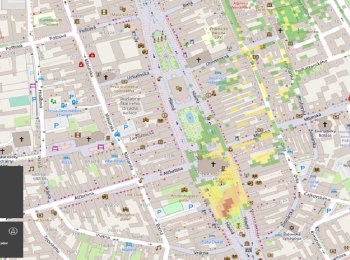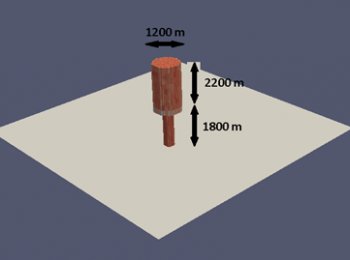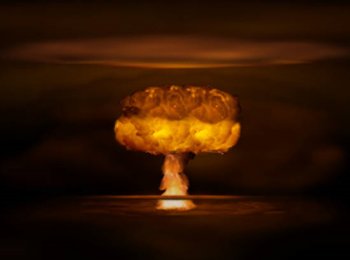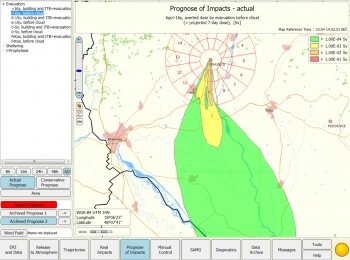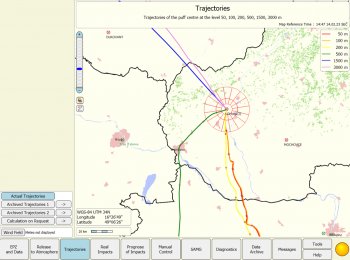The workshop is organized by company ABmerit, Ltd., Slovakia as a part of research project funded by Slovak Government.
The workshop is planned as a set of invited talks and discussion sessions on three Case Studies.
We hope that the invited talks and the Case Studies will enable us to build a very creative atmosphere, which will be a great enrichment for all participants.
Venue:
Mountain Resort - Hotel Patria, Strbske Pleso, High Tatras, Slovakia
Dates:
Start on May 31, 2023 at 14:00, End on June 02, 2023 at 17:30
Topics:
- Urban transport and dispersion modelling
- CFD model applications for urban environment
- AT&D modelling in upper atmospheric layers; source terms
- Transport and dispersion of nuclear explosions at any elevation
- Earth Observation data, 3D building data
- Decision support ESTE for radiological and nuclear emergencies
Workshop Programme:
Day 1, Wednesday, May 31, 2023
13:00 - 14:00 Registration of participants (in the lobby of the conference hotel Patria)
14:00 - 14:30 Welcome by organizers, Opening (ABmerit, conference hall of the hotel Patria)
14:30 - 15:00 Ľudovít Lipták (ABmerit): AT&D modelling in urban environment, modelling in upper atmospheric layers; transport and dispersion after nuclear weapon explosion
15:00 - 15:30 Michal Marčišovský (ABmerit): Source terms in radiological dispersion device, source terms after nuclear weapon explosion
15:30 - 16:00 coffee break
16:00 - 16:30 Eva Fojcíková (ABmerit): 3D Geodata for urban dispersion models
16:30 - 17:00 Monika Krpelanová (ABmerit): Source terms for severe accidents at nuclear power plants
17:00 - 17:30 Peter Čarný (ABmerit): Decision support for radiological and nuclear emergencies. Dosimetry models, age categories, urgent protective measures and measures in the field of agriculture. Radiological parameters required in the process of protective measures recommendations.
17:30 - 18:00 Discussion
18:00 - 19:00 Break for dinner at the hotel restaurant
19:00 End of Day1
Day 2, Thursday, June 01, 2023
09:00 - 09:45 Steve Hanna (Hanna Consultants, Kennebunkport, Maine, U.S.): Brief Review of History of Modeling Transport and Dispersion of Radiological Releases.
09:45 - 10:15 Oscar Björnham (Swedish Defence Research Agency, Department for CBRN Security and Defence): Atmospheric transport of radioactive materials and estimation of the coupled radiation dose by means of comprehensive Monte Carlo simulations using detailed phantoms in various environments.
10:15 - 10:30 coffee break
10:30 - 11:00 Haruko Murakami Wainwright (Department of Nuclear Science & Engineering, Massachusetts Institute of Technology, Cambridge, Massachusetts, U.S.): Lessons learned from the Fukushima accident: monitoring data synthesis and cross-disciplinary review.
11:00 - 11:30 Anna Wawrzynczak-Szaban, Sławomir Potempski, Piotr Kopka (Polish National Centre for Nuclear Research, Centre of Excellence MANHAZ): Localization of the airborne contaminant in the urban terrain with the hybrid stochastic artificial neural network system.
11:30 - 12:00 Jozef Sabol (Department of Crisis Management, Police Academy of Czech Republic): Importance of adequate interpretation of modelling results in quantities reflecting related radiological risks.
12:00 - 14:00 Lunch break (lunch at the restaurant of the hotel Patria)
14:00 - 15:45 Case Study 1 (conducted by ABmerit, with interactive discussion, all participants)
Scenario: Event with application of radiological dispersion device in an urban environment.
Interactive discussion of workshop participants on an applied approach to urban atmospheric dispersion modelling and radiological parameter modelling. And, subsequently, example of real calculation performed.
Discussion on potential source term hypotheses and radionuclides. 3D data in urban environment. Wind field data in urban environment, discussion on approaches to urban wind field data management. Atmospheric Dispersion and Transfer models applied. Discussion on model parameters. Discussion on dosimetry models applied (exposure from air, from deposit, inhalation, deposit on walls, deposit on roofs, air activity in different levels above the ground, assessment of radiation doses to affected people). Discussion of the required time and the possibility of meeting the time requirements of a real emergency response. Discussion of outputs of modelling available to emergency responders.
15:45 - 16:00 coffee break
16:00 - 17:45 Case Study 2 (conducted by ABmerit, with interactive discussion, all participants)
Scenario: Event beyond the borders of the country, with application of a nuclear weapon.
Interactive discussion of workshop participants on the approach to large-scale atmospheric dispersion and modelling of an event with a fission or fusion nuclear device. Subsequently, an example of real calculation of dispersion and radiological consequences in the affected territories at great distances from the epicenter.
Discussion on potential source terms. Discussion of the need for numerical weather forecast data at higher altitudes than is common for events at nuclear facilities on the ground. Discussion of AT&D models applied. Discussion on AT&D model parameters. Discussion of the outputs needed to manage the radiological response.
18:30 - 21:00 Workshop Dinner, Chalet "Koliba Patria", walking distance from the hotel Patria.
21:00 End of Day 2
Day 3, Friday, June 02, 2023
Two morning sessions in parallel:
Session1: Czecho-Slovak session (by ABmerit)
09:00 - 12:00 Presentation and interactive discussion of features, approaches and algorithms of nuclear decision support systems ESTE as they are deployed and running 24/7 at nuclear crisis centers in Slovakia and Czech Republic:
- ESTE UVZ,
- ESTE Bohunice,
- ESTE Mochovce,
- ESTE Analyst
- ESTE EU;
- ESTE Dukovany,
- ESTE Temelin,
- ESTE Annual Impacts.
Session2: Visit to astronomical observatory of the Slovak Academy of Sciences at the peak "Lomnický štít". Note: Number of participants is limited; session 2 is intended mainly for participants outside Slovakia and Czech Republic.
08:45 - 13:00
08:45 - 09:15 organized transport by bus from the hotel Patria to "Tatranská Lomnica" village
09:30 - 10:30 organized transport by cable car up to the astronomical observatory at the peak "Lomnický štít" (2634 m above sea level)
10:30 - 11:30 scientific visit to astronomical observatory
11:30 - 12:30 organized transport by cable car down to "Tatranská Lomnica" village
12:30 - 13:00 organized transport by bus back to the hotel Patria
One common afternoon session:
12:30 - 14:00 Lunch break (lunch at the restaurant of the hotel Patria)
14:30 - 16:30 Case Study 3 (conducted by ABmerit, with interactive discussion, all participants)
Scenario: Event at a nuclear facility in the country.
Interactive discussion of workshop participants on an approach to the source term assessment, atmospheric dispersion modelling and radiological parameters for implementation of protective measures. Subsequently, example of real calculation performed, from a nuclear event identification, through AT&D modelling, up to an assessment of the need of protective measures to population affected.
Discussion of the source terms and attributes of the source terms from nuclear facilities. Discussion on input data to perform calculation of radiological consequences. Discussion of the need of meteorological data: Site measurements and numerical weather forecast. Discussion of AT&D models applied. Dosimetry models, age categories, urgent protective measures and measures in the field of agriculture. Discussion of outputs potentially available for management and control of protective measures as implemented by emergency responders.
16:30 - 17:30 Final discussion of all participants
17:30 End of Day 3, End of the Workshop



